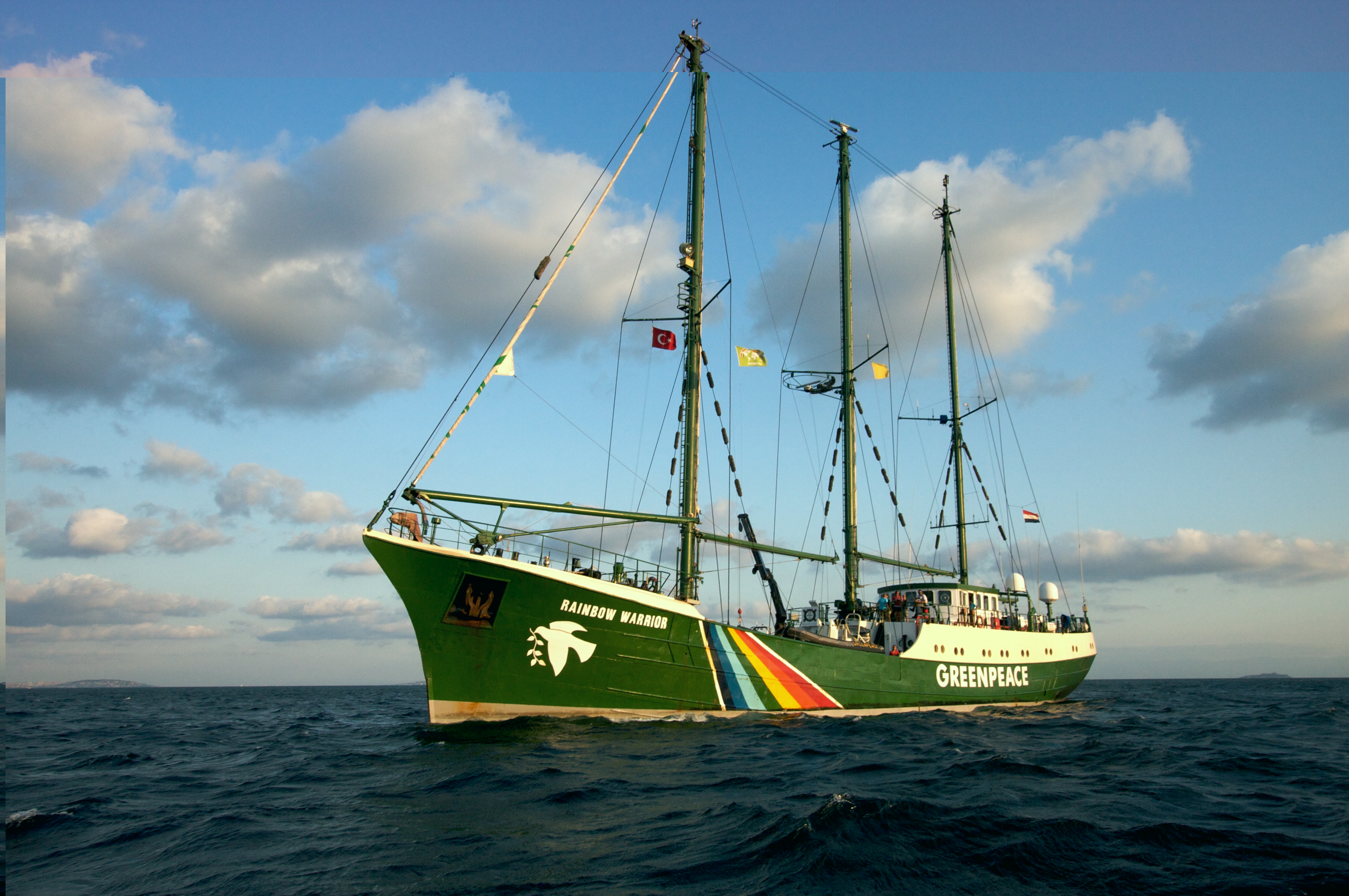
The sinking of the Rainbow Warrior
In 1985 New Zealand was basking in its position as leader of the anti-nuclear movement. As a country it had clearly punched above its weight. Then, just before midnight on the evening of 10 July two explosions ripped through the hull of the Greenpeace flagship Rainbow Warrior, which was moored at Marsden Wharf in Auckland. A Portuguese crew member, Fernando Pereira, was killed in the explosions. The Rainbow Warrior had been involved in protests over French nuclear testing in the Pacific. French Secret Service (DGSE) agents were sent to prevent it leaving for another protest campaign at Mururoa Atoll.
Two DGSE officers, Dominique Prieur and Alain Mafart, were arrested on 24 July. Having been charged with murder, both pleaded guilty to manslaughter and were sentenced to 10 years' imprisonment. The case was a source of considerable embarrassment to the French government. While the attack was on an international organisation and not the New Zealand nation as such, most New Zealanders did not make such a distinction. The fact that the attack was carried out on New Zealand territory by a supposed friend produced a sense of outrage and a serious deterioration in relations between New Zealand and France.
Greenpeace
Greenpeace is an international environmental organisation founded in Canada in 1971. It is well known for its campaigns to stop nuclear testing and whaling, as well as its stand on other environmental issues such as bottom trawling, global warming, ancient forest destruction and genetic engineering. The organisation's official mission statement says that:
'Greenpeace is an independent, campaigning organisation which uses non-violent, creative confrontation to expose global environmental problems, and to force solutions for a green and peaceful future. Greenpeace's goal is to ensure the ability of the earth to nurture life in all its diversity.'
France used its influence to threaten New Zealand's access to the important European Economic Community market, and New Zealand exports to France were boycotted. New Zealanders reacted in a similar manner to French imports. Eventually, both countries agreed to allow the United Nations to mediate a settlement.
Almost a year after the bombing, on 8 July 1986, United Nations Secretary General Javier Perez de Cuellar announced, in a binding decision, that New Zealand would receive an apology and compensation of $13 million from France. France was also ordered not to interfere with New Zealand's trade negotiations.
Dominique Prieur and Alain Mafart were to serve their sentences in full on Hao Atoll in French Polynesia. In what was considered to be the final insult, both were released early: Alain Marfart returned to France because of 'illness' in 1987, while Dominique Prieur was repatriated in May 1988 because she was pregnant. Both were honoured, decorated and promoted upon their return home.
This incident did much to promote what was described as New Zealand's 'silent war of independence' and was central to an upsurge in New Zealand nationalism. There was a sense of having to 'go it alone' as traditional allies such as the United States and Britain sat on their hands while France worked to block New Zealand exports. The failure of Britain and the United States to condemn this act of terrorism hardened support for a more independent foreign policy line.
In September 2006 the agent who placed the bomb was named as Gerard Royal by his brother, Antoine. Their sister, Segolene Royal, was an unsuccessful Socialist candidate in the 2007 French presidential elections.



